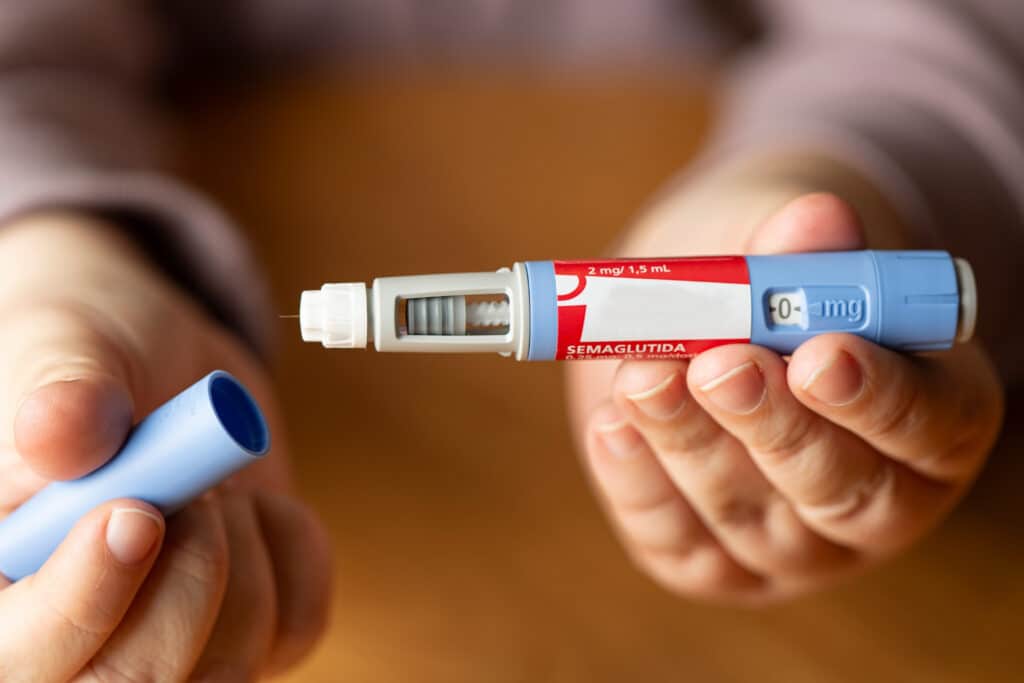GLP-1 Receptor Agonists: A Game-Changer for Type 2 Diabetes, Obesity, and Cardiometabolic Health
APRNs treating patients with type 2 diabetes, obesity, and cardiometabolic risk factors are seeing a significant shift in frontline pharmacologic care. Glucagon-like peptide-1 receptor agonists (GLP-1s) are gaining traction in both primary care and specialty settings, and for good reason.
These agents go beyond glycemic control. They can support weight reduction, cardiovascular health, and even renal protection, making them a powerful tool for patients managing several conditions.
What Are GLP-1 RAs, and Why Are They Getting So Much Attention?
GLP-1 RAs mimic the action of a natural hormone to help regulate blood glucose. But their benefits extend further. They help curb appetite, slow gastric emptying, and reduce postprandial glucose spikes.¹
You’ve likely encountered names such as semaglutide (Ozempic®, Wegovy®, Rybelsus®), tirzepatide (Mounjaro®, Zepbound®), dulaglutide (Trulicity®), and liraglutide (Victoza®, Saxenda®).¹⁻⁷
Early versions of these drugs required daily injection. Now, patients have access to once-weekly injections and an oral formulation, semaglutide (Rybelsus®), for those who prefer to avoid needles.²
GLP-1s and the ADA Guidelines: A New First-Line Therapy
The American Diabetes Association’s 2024 Standards of Care are clear: GLP-1 RAs are often first-line agents for patients with type 2 diabetes who also have atherosclerotic cardiovascular disease, chronic kidney disease, or obesity.¹
For patients with a body mass index (BMI) of 30 kg/m² or higher or elevated cardiovascular risk, semaglutide or tirzepatide may be considered before initiating metformin, especially when weight loss or cardioprotection is the top priority.¹
More Than Just A1C Control
While GLP-1s are effective for lowering blood glucose, the added clinical benefits are just as important:
- Weight loss: Many patients experience a reduction of 10 percent or more in total body weight.² ⁵ ⁶
- Cardiovascular protection: Liraglutide, dulaglutide, and semaglutide have demonstrated reductions in major adverse cardiovascular events.¹
- Renal protection: These agents may slow the progression of chronic kidney disease.¹
GLP-1s are also being studied for a wide range of potential uses, including nonalcoholic steatohepatitis (NASH), obstructive sleep apnea, heart failure with preserved ejection fraction, and even Alzheimer’s disease.¹
What APRNs Should Know Before Starting
GI side effects, particularly nausea and vomiting, are the most common patient complaints. These usually occur during the dose-escalation phase and tend to diminish over time.¹
Patients can improve tolerability by consuming smaller portions and avoiding high-fat or spicy meals.¹
Dosing should start low and be increased gradually based on tolerance and clinical goals.¹
Administration and Storage Considerations
- Injectable agents such as dulaglutide and semaglutide must be refrigerated before the first use. After that, they may be stored at room temperature for a limited time, typically 14 to 56 days depending on the drug.³⁻⁵
- Oral semaglutide (Rybelsus®) must remain in its original container to protect it from moisture. It should be taken on an empty stomach with no more than 4 oz of water, at least 30 minutes before food, drink, or other medications.²
Important Safety Warnings
All GLP-1s carry a boxed warning for thyroid C-cell tumors seen in rodent studies. These drugs are contraindicated in patients with a personal or family history of medullary thyroid carcinoma or multiple endocrine neoplasia syndrome type 2.¹⁻⁹
Other potential risks include:¹
- Acute pancreatitis
- Gallbladder disease (cholelithiasis, cholecystitis)
- Acute kidney injury
- Hypersensitivity reactions
Patients should be monitored for persistent abdominal pain, changes in renal function, and other signs that may require discontinuation or additional workup.
Final Thoughts for APRNs
GLP-1s have moved beyond being simply glucose-lowering agents. They are now shaping how clinicians manage weight, cardiovascular disease, and renal risk in patients with type 2 diabetes and obesity.
With clear benefits, broadening indications, and growing patient interest, now is the time for APRNs to confidently integrate GLP-1s into treatment plans. Understanding how to initiate, titrate, and monitor these agents can help optimize patient outcomes across multiple domains.
References (AMA 11th Edition)
- American Diabetes Association. Standards of Medical Care in Diabetes—2024. Diabetes Care. 2024;47(Suppl 1):S1–S308.
- Rybelsus [package insert]. Plainsboro, NJ: Novo Nordisk Inc.; 2023.
- Victoza [package insert]. Plainsboro, NJ: Novo Nordisk Inc.; 2022.
- Saxenda [package insert]. Plainsboro, NJ: Novo Nordisk Inc.; 2022.
- Ozempic [package insert]. Plainsboro, NJ: Novo Nordisk Inc.; 2023.
- Wegovy [package insert]. Plainsboro, NJ: Novo Nordisk Inc.; 2023.
- Trulicity [package insert]. Indianapolis, IN: Eli Lilly and Company; 2023.
- Mounjaro [package insert]. Indianapolis, IN: Eli Lilly and Company; 2023.
- Zepbound [package insert]. Indianapolis, IN: Eli Lilly and Company; 2024.






